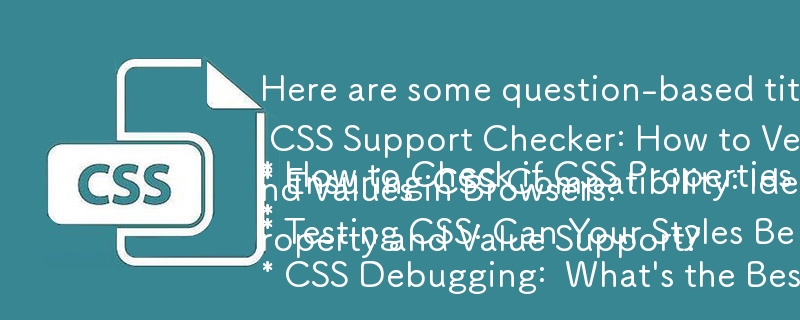

When implementing CSS, it's crucial to ensure that your styles are supported by the user's browser. Let's investigate how to determine whether both CSS properties and values are supported.
In CSS:
<code class="css">@supports (display: flex) {
/* Code to be executed if flexbox is supported */
}</code>In JavaScript:
<code class="javascript">if ('display' in document.body.style) {
// Flexbox is supported
}</code>In JavaScript:
<code class="javascript">const element = document.createElement('div');
element.style.setProperty('text-decoration-style', 'blink');
const style = window.getComputedStyle(element);
if (style.getPropertyValue('text-decoration-style') === 'blink') {
// Blink effect is supported
}</code>However, there is a newer and more efficient method available:
The CSS.supports() API offers a more robust solution:
<code class="javascript">console.log(CSS.supports('text-decoration-style', 'blink'));
// True or false
console.log(CSS.supports('display', 'flex'));
// True or false
console.log(CSS.supports('--foo', 'red'));
// True or false</code>This method supports both property and value validation.
By utilizing these techniques, you can confidently ensure that your CSS styles will be rendered as intended, regardless of the user's browser.
The above is the detailed content of Here are some question-based titles that fit your article: * How to Check if CSS Properties and Values Are Supported by a Browser? * CSS Support Checker: How to Verify Property and Value Compatibili. For more information, please follow other related articles on the PHP Chinese website!
 How to download and save today's headline videos
How to download and save today's headline videos
 The difference between windows hibernation and sleep
The difference between windows hibernation and sleep
 How to solve Java large file read exception
How to solve Java large file read exception
 what is dandelion
what is dandelion
 What are the benefits of java factory pattern
What are the benefits of java factory pattern
 What does Linux mean?
What does Linux mean?
 Introduction to SSL detection tools
Introduction to SSL detection tools
 What are the data backup software?
What are the data backup software?
 How to unlock android permission restrictions
How to unlock android permission restrictions




